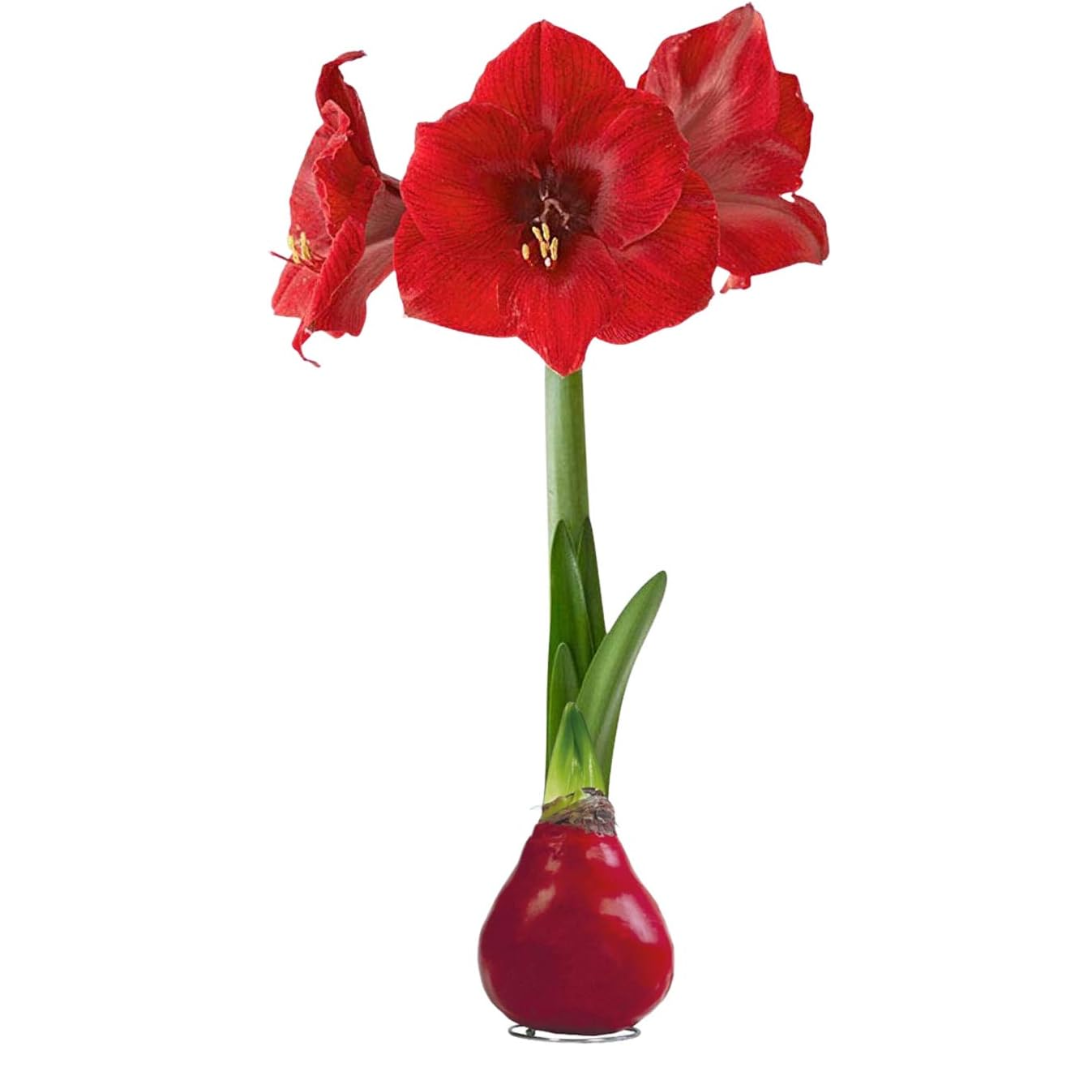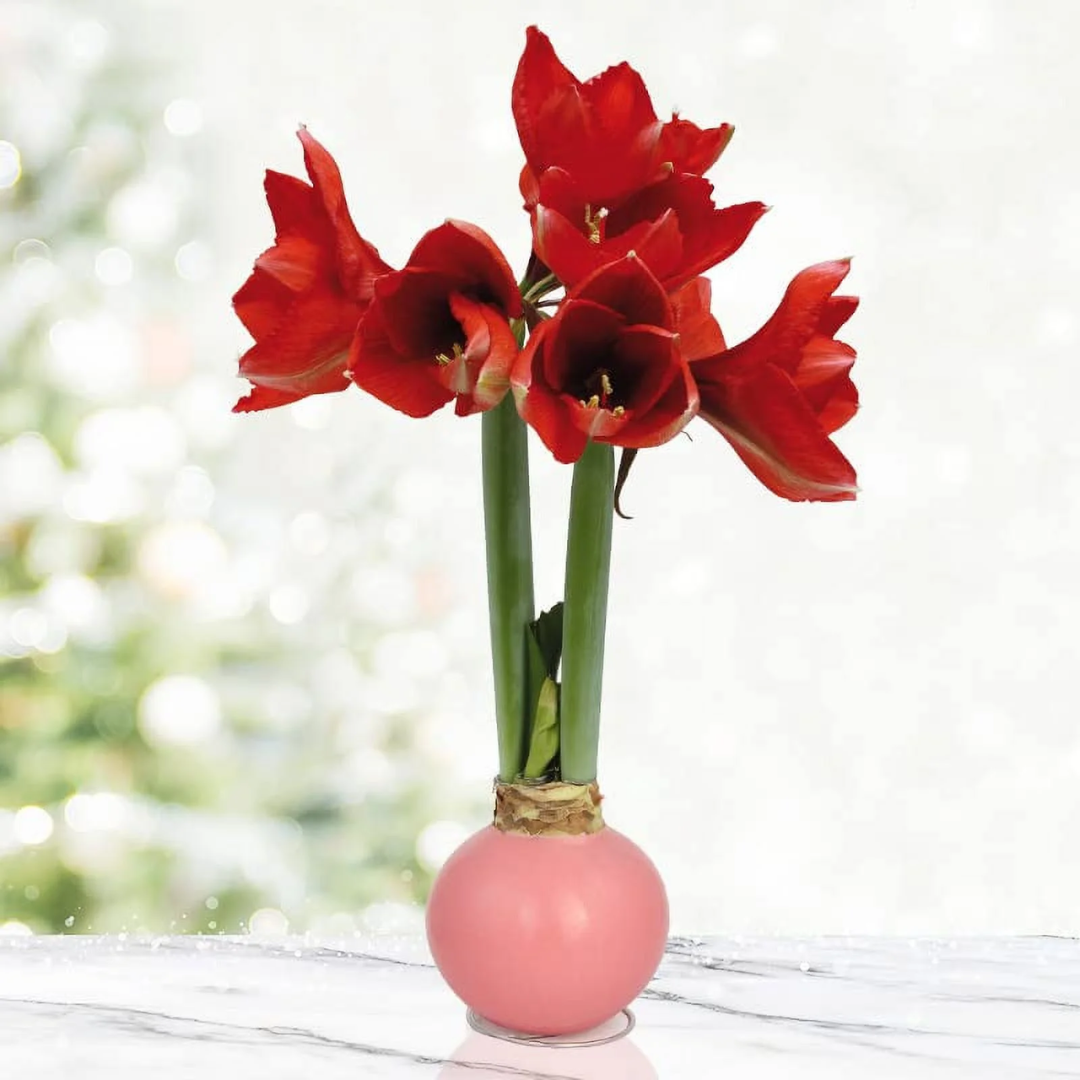What to Do With Amaryllis After it Blooms? 5 Steps You Should Take for This Radiant Holiday Flower
Treat your amaryllis bulbs right once the blooms die, and you needn't start over, they will blossom year after year with these expert tips
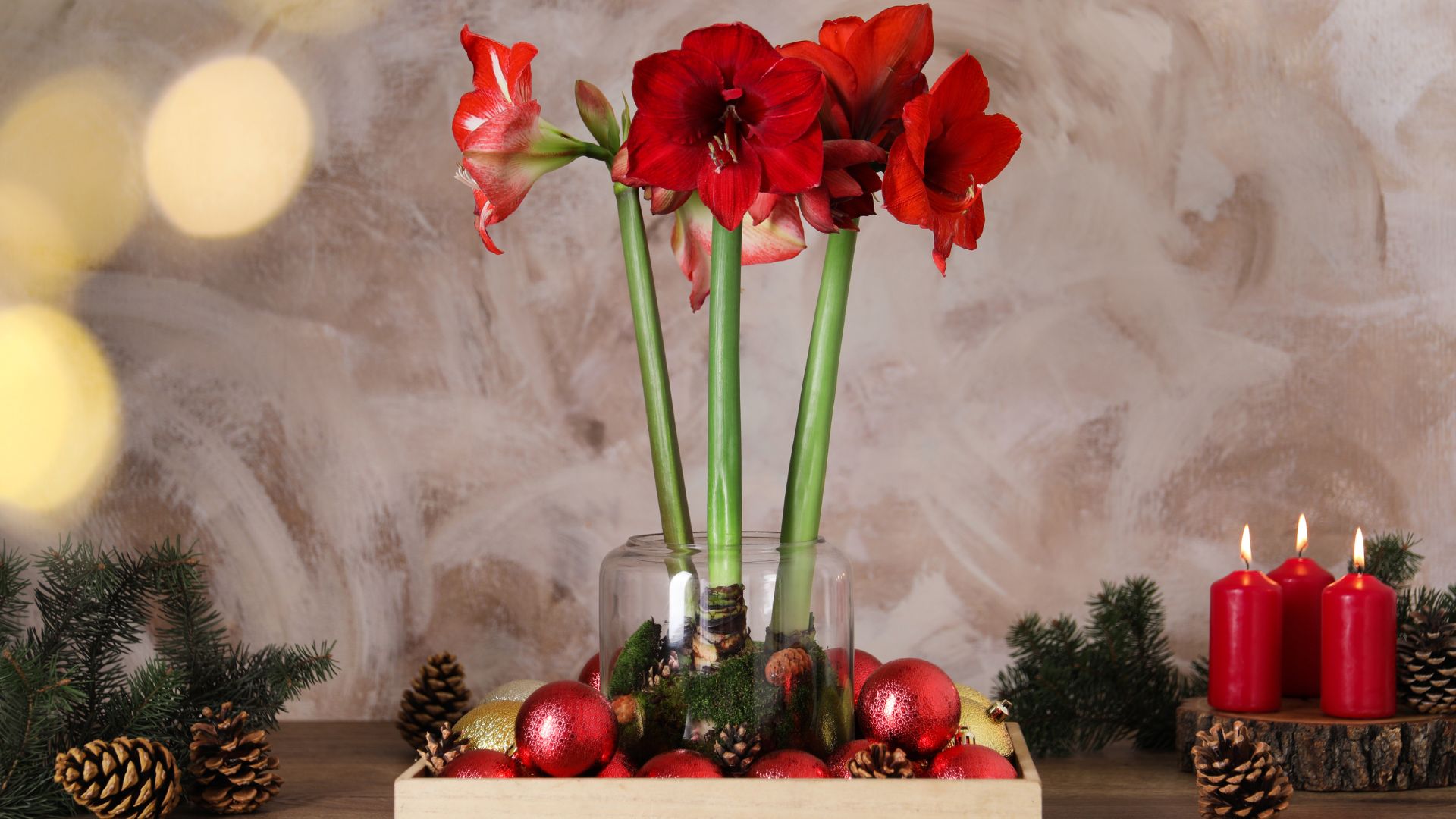
What do you do with your amaryllis after it blooms? With their beautiful showy red and white blooms, amaryllis are popular plants for the holidays, but they are not one-off bloomers, contrary to what many people think.
These plants will flower for around one to two months, but once you've discovered how to grow amaryllis, you can get your bulb to re-bloom every year. "Many of us as houseplant lovers have probably received an Amaryllis bulb for the holiday season," says Lisa Eldred Steinkopf, the Houseplant Guru and author of Bloom and Houseplants. "They flower approximately 6-8 weeks after being planted and have huge, gorgeous blooms. If cared for correctly, they will bloom again the next year."
Here is what you can do with your Amaryllis after it blooms so you can enjoy this pretty plant on repeat.
5 steps to take to make amaryllis bloom again
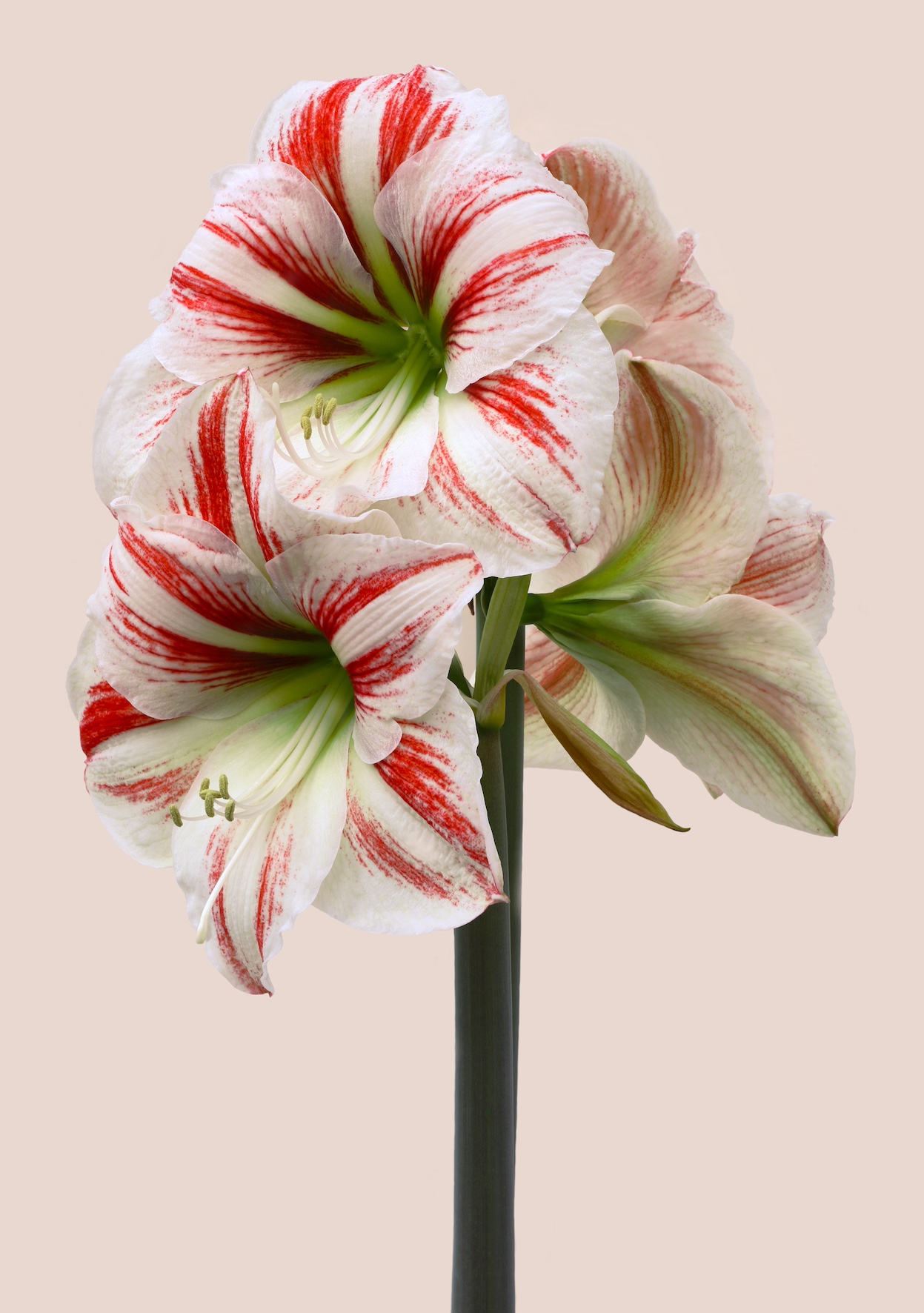
"The amaryllis bulbs everyone purchases for the holidays are nearly all hybrids resulting from crossing different species of Hippeastrum with each other and with other hybrid Hippeastrum," explains Justine Kandra, horticulturalist at Missouri Botanical Gardens.
"Amaryllis and Hippeastrum are two different genera in the Amaryllidaceae family. However, the name Amaryllis is still used to refer to the many hybrid Hippeastrum cultivars available for forcing indoors."
Whatever type of plant you have, the care is the same, so find out the five steps to take to get your Amaryllis to bloom again.
1. Cut the spent flowers away
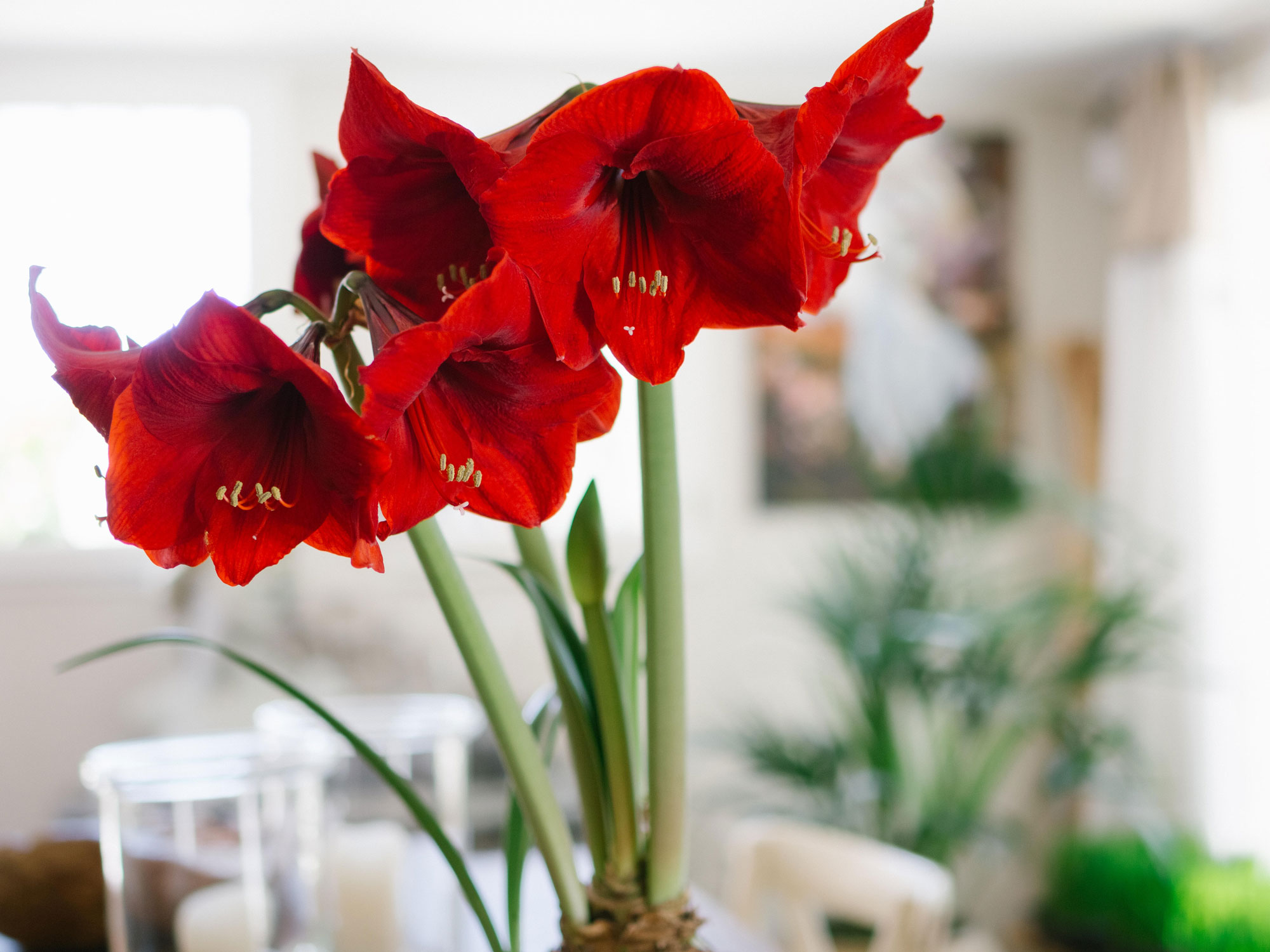
One of the reasons Amaryllis is so popular at Christmas, is because it's one of the best bulbs to plant in the fall, taking around 6-8 weeks to flower. Once the beautiful blooms on your Amaryllis have faded, there is still more life in the plant. Treat it right and your plant will flower again and again for many years to come.
"Once all the flowers are done blooming, the flowering stalk can be cut off," says Justine Kandra. "Leaves will start to grow from the bulb, if they haven't already. It is very important to not cut these leaves off."
"After the flowers have been cut off, the stalk can also be left until it shrivels, as it is photosynthesizing and replenishing the bulb, as the leaves are," says Lisa Eldred Steinkopf, the Houseplant Guru and author of Bloom and Houseplants (at Amazon).
2. Water the bulb and allow the leaves to grow
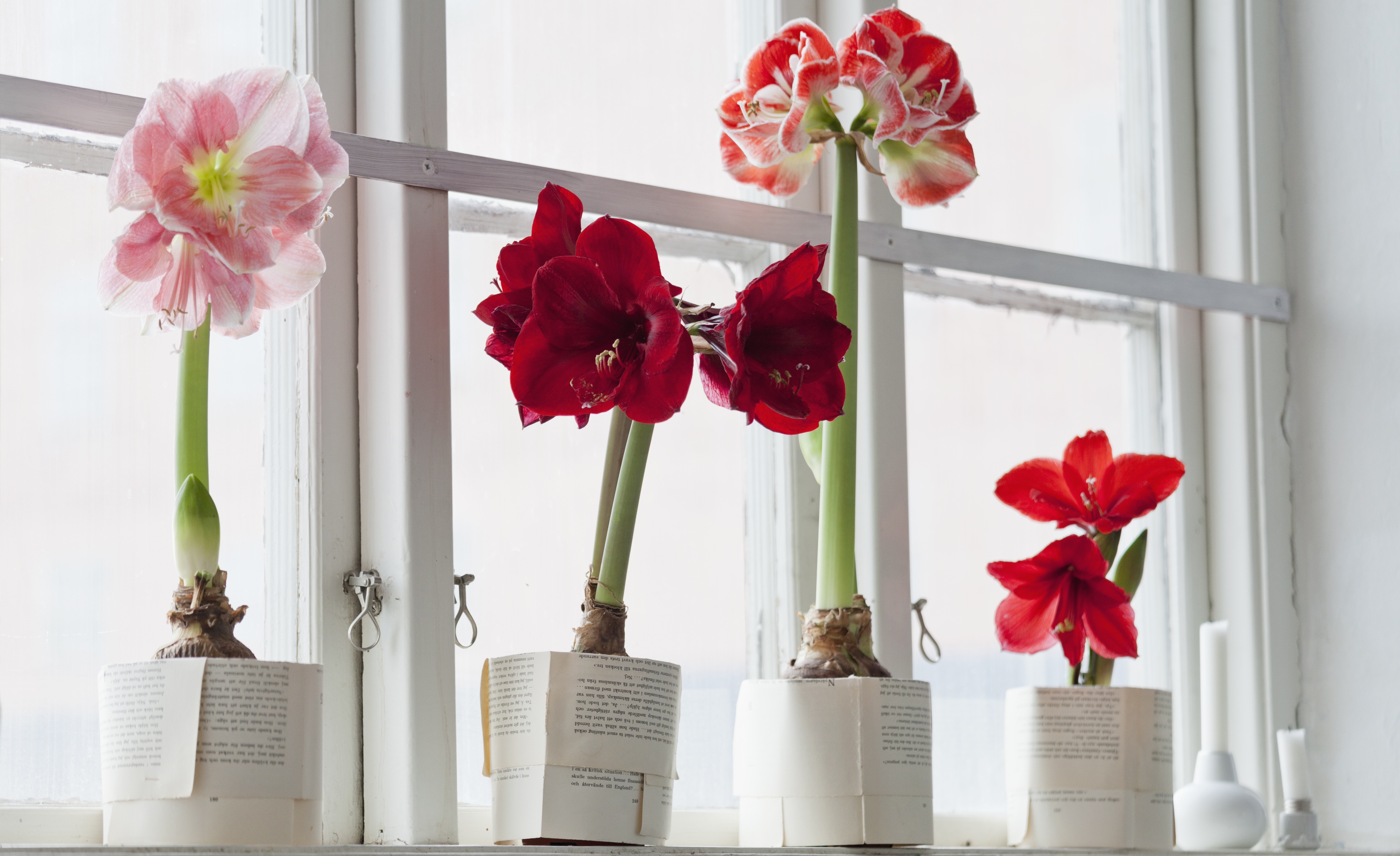
Once the flowers on your Amaryllis have been removed and the stalk has been cut down or left to shrivel, the leaves can be left to grow. The potted bulb can be placed on a window sill and treated like your other beautiful houseplants.
"Place your Amaryllis in a warm, sunny location such as a south-facing window so the leaves can start gathering energy for next year's blooms," says Justine. "Water it and fertilize as you would any other houseplant."
3. Move the plant outside in spring

Continue to water your houseplant indoors, and wait for the weather to warm up before putting it outside in your backyard.
"Once the danger of frost has passed in spring, potted Amaryllis bulbs can be moved outdoors to get extra sun and warmth," says Justine. "However, if that's not an option, amaryllis can also be kept indoors year-round, as long as they get plenty of light."
"If you move your Amaryllis outside, grow it in a semi-sunny spot," says Lisa. "Full sun might be too much for it, so keep it where it won't receive afternoon sun. Fertilize your plant all summer, while it is actively growing, to help rejuvenate the bulb."
4. Allow the plant to go dormant

Known as one of the best winter houseplants, it's important to note that Amaryllis leaves will continue to grow. However, it won't flower until after its dormant phase. The growth helps the bulb to store energy for future blooms and is part of its life cycle.
"At the end of summer, allow your plant to dry out and let the leaves die down," says Lisa. "You can remove the bulb from the pot or leave it as it is. Cut the yellowing leaves off and allow the bulb to rest for at least two months."
"In the fall, Amaryllis plants should be allowed to enter a dormant resting period," explains Justine. "The two keys to achieving a successful dormancy are to stop watering and provide cooler temperatures. Amaryllis are not tolerant of freezing temperatures though, so make sure to bring them inside a garage or basement where they will not fully freeze."
5. Start watering the bulb after dormancy

To encourage your Amaryllis bulb to bloom and bring it out of dormancy, it will need water, warmth, and light. With the right care and timing, it will be ready to be included with your Christmas flowers.
"After around two months, you can move the pot back into a warm, sunny location and resume watering to trigger blooming," says Justine. "If your Amaryllis starts growing offsets, these can be separated and potted up in their own container in the spring.
"Start watering the bulb around six to eight weeks before you'd like it to bloom again," says Lisa. "Giving it bright light is important to keep the leaves compact and sturdy. Then wait for it to put out its next display of flowers.
Lisa continues: "If you choose to leave the offsets on the original bulb, eventually, you will have a large pot full of flowering bulbs. If that's the case, keep moving it to a larger pot that is only one inch or so wider on either side of the bulb. If your bulb fails to bloom again, then it didn't receive enough light and/or fertilizer all summer to replenish itself."
FAQs
What is the life cycle of Amaryllis?

Amaryllis generally flowers between December and February. Once the faded flowers and stalk are cut away, the plant enters a growth phase from spring to summer. Then, it requires a couple of months of dormancy, usually September and October, before flowering again.
"Amaryllis bloom once a year," says Justine Kandra, horticulturalist at the Missouri Botanical Gardens. "These are long-lived plants, easily surviving for decades as long as they receive the proper care."
Alluring Amaryllis Blooms
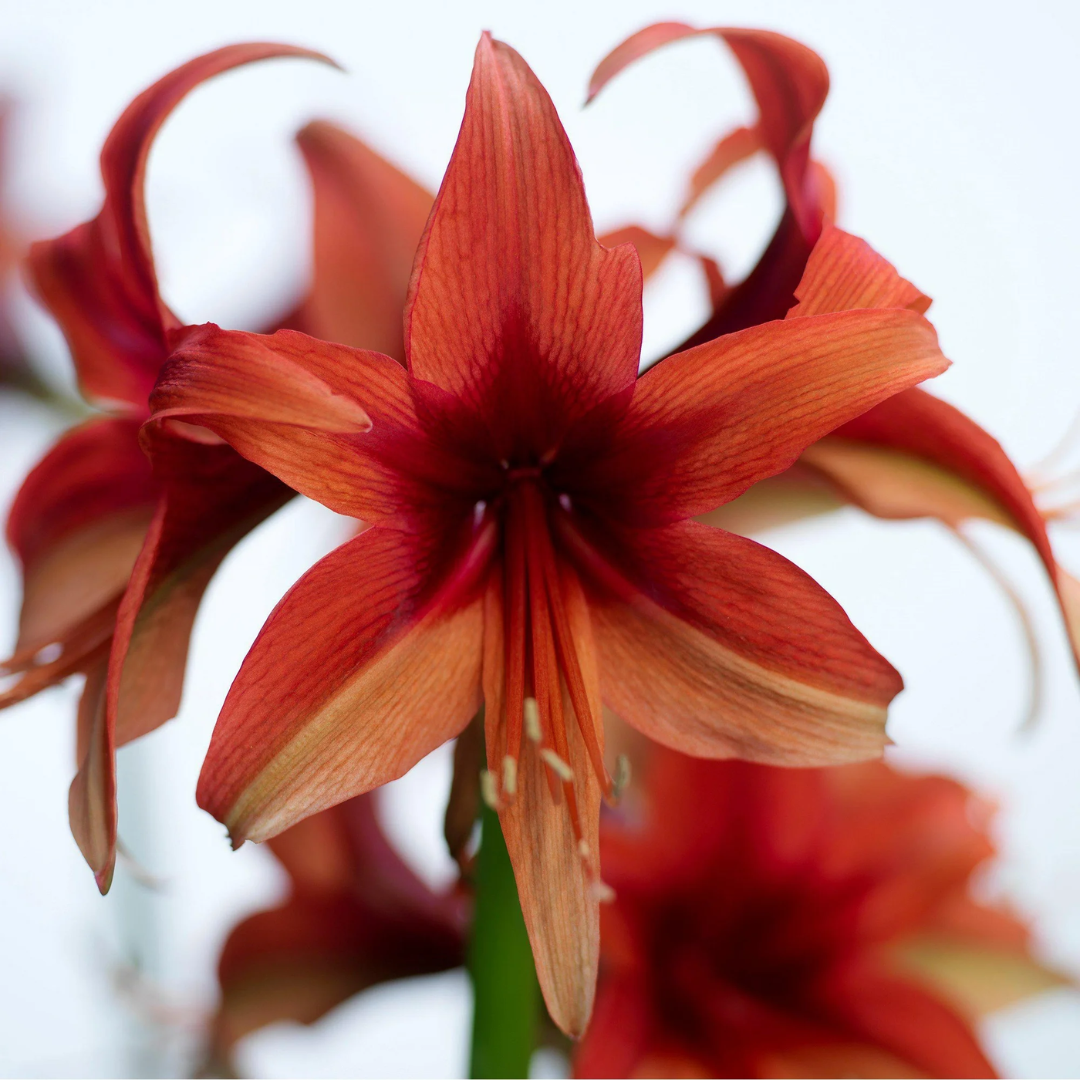
Price: $22
Was: $29.95
This radiant red Amaryllis plant from Walmart comes in a pack of 1 and can grow beautifully in bright light indoors. It also loves partial shade outdoors and thrives in zones 8-10.
Be The First To Know
The Livingetc newsletters are your inside source for what’s shaping interiors now - and what’s next. Discover trend forecasts, smart style ideas, and curated shopping inspiration that brings design to life. Subscribe today and stay ahead of the curve.
Jacky Parker is a London-based freelance journalist and content creator, specialising in interiors, travel and food. From buying guides and real home case studies to shopping and news pages, she produces a wide range of features for national magazines and SEO content for websites
A long-time contributor to Livingetc, as a member of the team, she regularly reports on the latest trends, speaking to experts and discovering the latest tips. Jacky has also written for other publications such as Homes and Gardens, Ideal Home, Red, Grand Designs, Sunday Times Style and AD, Country Homes and Interiors and ELLE Decoration.
-
 The 'New British' Style? This Victorian London Home Embraces Its Owners' Global Background
The 'New British' Style? This Victorian London Home Embraces Its Owners' Global BackgroundWarm timber details, confident color pops, and an uninterrupted connection to the garden are the hallmarks of this relaxed yet design-forward family home
By Emma J Page
-
 Muji Living Room Ideas — 5 Ways to Harness The Calming Qualities of This Japanese Design Style
Muji Living Room Ideas — 5 Ways to Harness The Calming Qualities of This Japanese Design StyleInspired by Japanese "zen" principles, Muji living rooms are all about cultivating a calming, tranquil space that nourishes the soul
By Lilith Hudson
-
 These Are the Dos and Don'ts of Bamboo Plant Placement — Follow This to Avoid Bad Feng Shui
These Are the Dos and Don'ts of Bamboo Plant Placement — Follow This to Avoid Bad Feng ShuiBy following the experts' guidance on where to place this houseplant you can usher luck, wealth, and prosperity into your home
By Lilith Hudson
-
 Is It Okay to Have a Mirror Facing a Door in Feng Shui? The Verdict Is In and It Just Might Surprise You
Is It Okay to Have a Mirror Facing a Door in Feng Shui? The Verdict Is In and It Just Might Surprise YouDecorating your home with mirrors calls for intention if you're dressing your space in accordance with Feng Shui. Here's what you should know.
By Amiya Baratan
-
 4 Things to Unpack as Soon as You Move House — For a Comfortable and Organized Fresh Start
4 Things to Unpack as Soon as You Move House — For a Comfortable and Organized Fresh StartIf you have a major move in the works and you're looking to prepare in advance, this is the starter kit you need to properly set up your new home.
By Amiya Baratan
-
 10 Decluttering Challenges to Have on Your Radar This Year — For a Tidier, More Mindful Home
10 Decluttering Challenges to Have on Your Radar This Year — For a Tidier, More Mindful HomeIf you're interested in transforming your home for the better, here are 10 decluttering challenges I recommend for a professionally tidy space.
By Amiya Baratan
-
 Biophilic Decluttering — What to Take Out of Your Home (and What to Put in) for a More Natural Home
Biophilic Decluttering — What to Take Out of Your Home (and What to Put in) for a More Natural HomeTry your hand at biophilic decluttering to ground your interiors, connect to the environment, and cure chronic clutter in one go. Here's how.
By Amiya Baratan
-
 The 10 Different Types of Kitchen Taps — And the Pros and Cons of Each One to Know Before You Pick
The 10 Different Types of Kitchen Taps — And the Pros and Cons of Each One to Know Before You PickFrom sleek pull-outs to vintage bridge taps, explore 10 kitchen tap styles that mix function, flair, and a splash of cool
By Linda Clayton
-
 How Much Does an Extension Cost in 2025? Renovation and Design Experts Break Down Your Budget
How Much Does an Extension Cost in 2025? Renovation and Design Experts Break Down Your BudgetExplore how much different types of extensions cost in 2025 to budget for your project accurately
By Amy Reeves
-
 9 Bathroom Storage Mistakes You're Probably Making That Make Using This Space Much Harder — And What to Do Instead
9 Bathroom Storage Mistakes You're Probably Making That Make Using This Space Much Harder — And What to Do InsteadDiscover which mistakes are to blame for your overcrowded and cluttered bathroom
By Seraphina Kyprios
